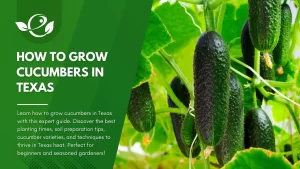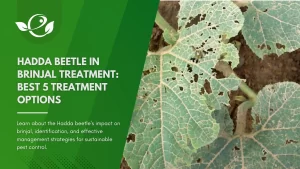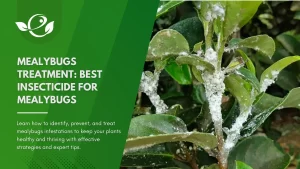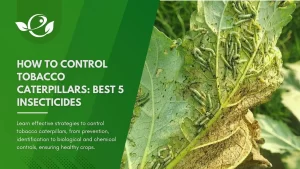Table of Contents
The spotted lanternfly (SLF) has emerged as one of America’s most destructive invasive pests, wreaking havoc on agricultural crops, ornamental plants, and native trees. Originating from Asia, this colorful insect has rapidly spread across multiple states, causing millions of dollars in damage annually. Prompt action is vital to mitigate their devastating impact. In this comprehensive guide, updated for 2025, we provide actionable methods for identifying, controlling, and preventing spotted lanternfly infestations effectively.
What is the Spotted Lanternfly?
The spotted lanternfly (Lycorma delicatula) is an invasive insect first detected in Pennsylvania in 2014. Native to China, India, and Vietnam, SLFs feed voraciously on the sap of various plants, weakening their hosts significantly.
Identification:
- Adults: Approximately one inch long, featuring distinctive spotted wings with black dots and vibrant red hind wings.
- Nymphs: Four developmental stages, initially black with white spots, eventually turning red with white dots.
- Eggs: Laid in grayish mud-like masses on smooth surfaces such as tree bark, outdoor furniture, vehicles, and buildings.
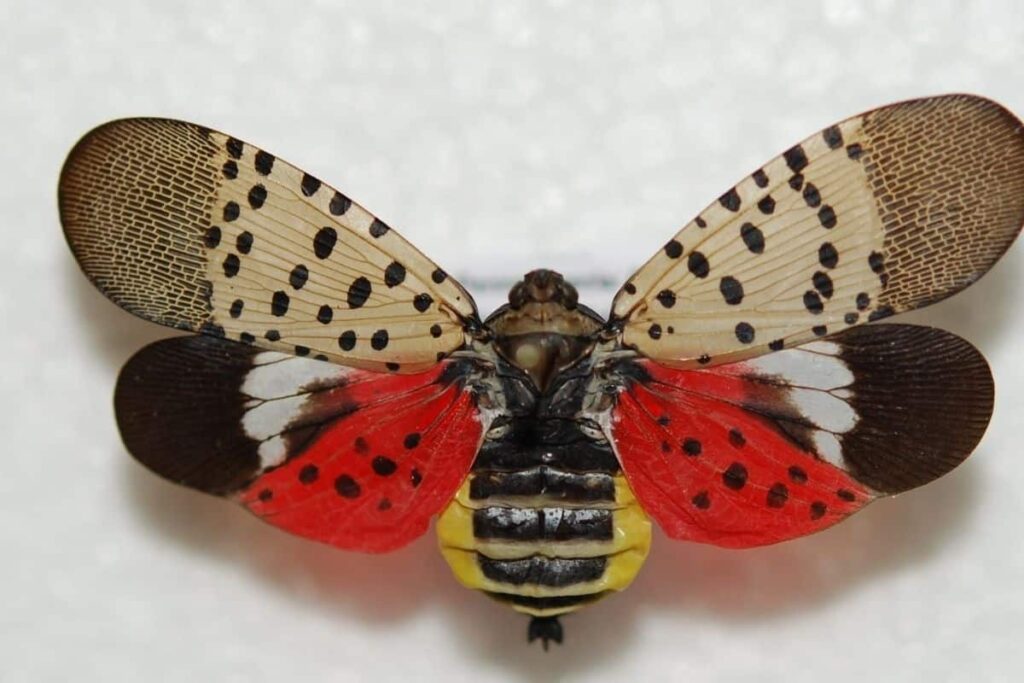
Life Cycle:
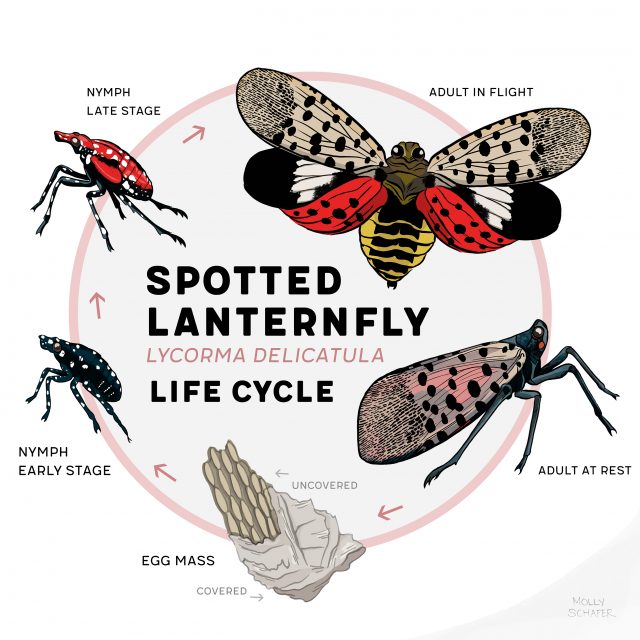
Eggs: September–May
Nymphs: May–July
Adults: July–December
SLFs primarily attack plants such as grapes, apples, stone fruits, and hardwood trees like maples and walnuts, severely impacting ecosystems and economies.
Signs of a Spotted Lanternfly Infestation
Early detection of SLF infestations is critical. Key indicators include:
- Presence of egg masses resembling dried mud
- Sticky honeydew secretions causing black sooty mold growth
- Large congregations of nymphs and adult insects on trees and plants
- Wilting, yellowing leaves, and decreased fruit yields
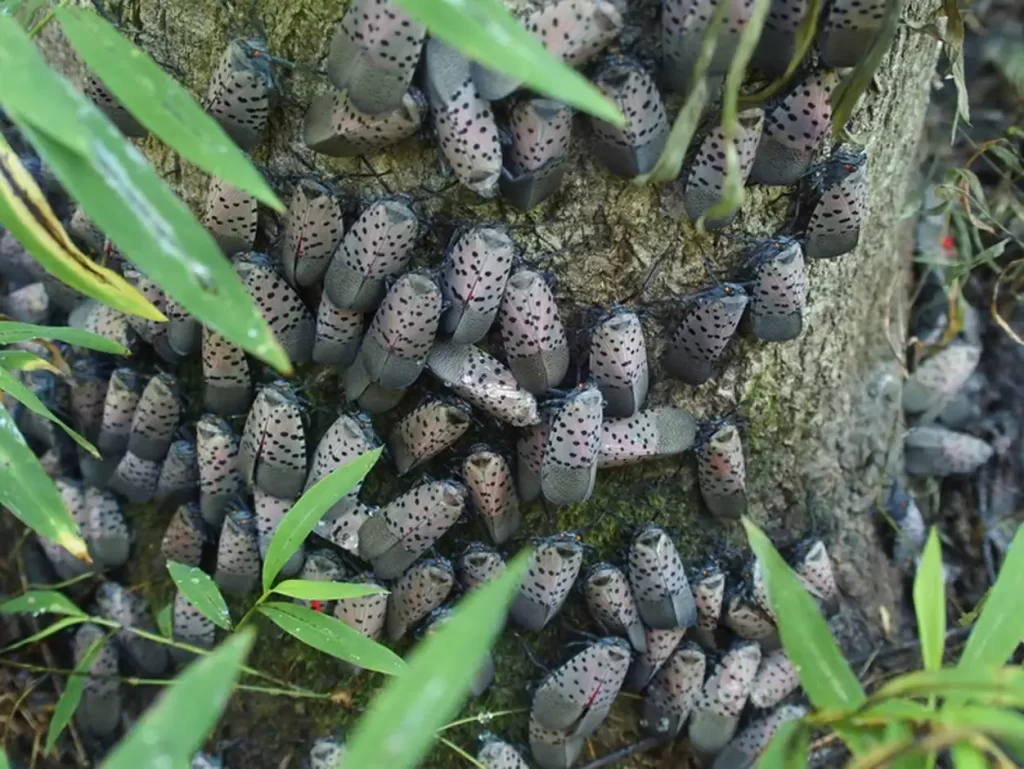
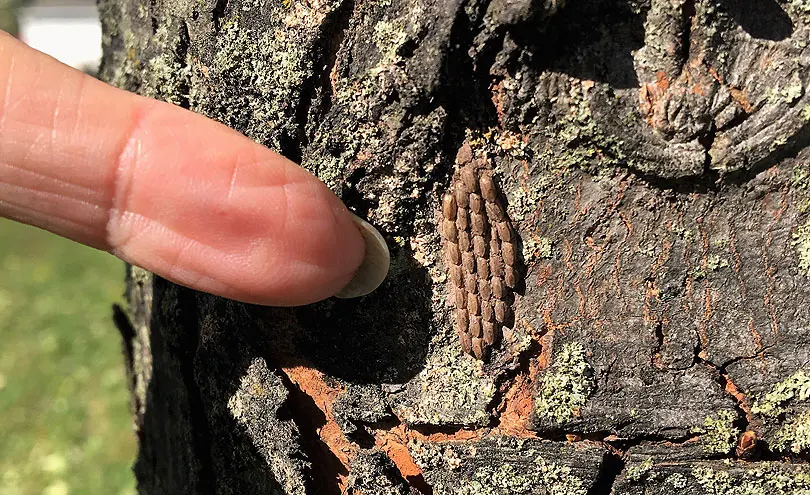
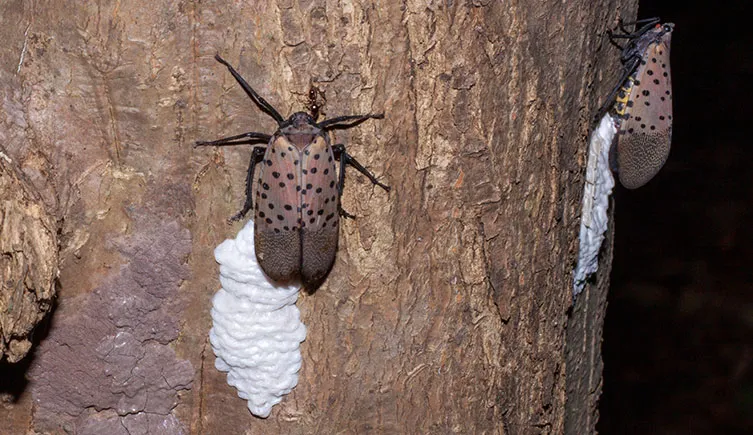
Regular inspections, especially during late summer and fall, greatly enhance chances of early detection.
Why Immediate Action is Essential
Delaying action against spotted lanternflies allows rapid multiplication and extensive damage. An individual female lanternfly can lay 30-50 eggs per mass, significantly increasing the population each season. The economic impact is immense, with potential losses to agriculture and forestry estimated at billions annually. Immediate response limits their spread and protects local agriculture and biodiversity.
How to Get Rid of Spotted Lanternfly: Step-by-Step Methods
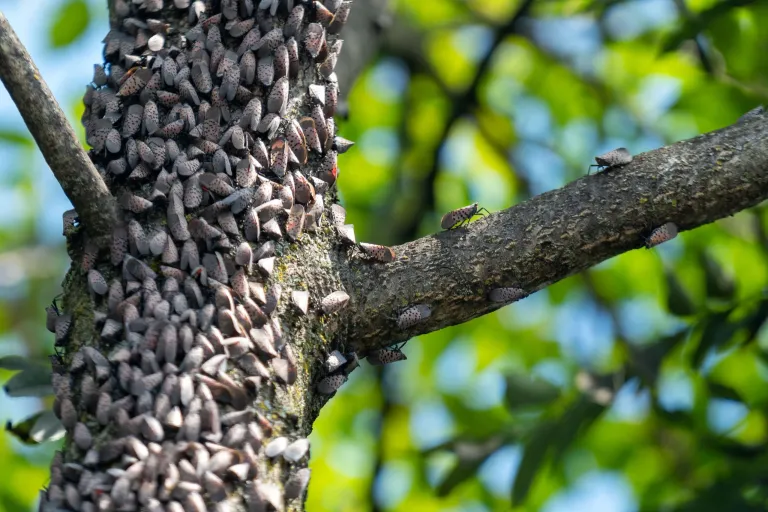
1. Scraping and Destroying Egg Masses
Eliminating egg masses is the most straightforward control method.
- Identification: Look for egg masses on tree bark, outdoor furniture, vehicles, and other smooth surfaces.
- Technique: Use a plastic scraper or card to remove egg masses into a container filled with alcohol or soap-water solution.
- Disposal: Properly seal and discard the container to prevent hatching.
- Best Time: Late fall through early spring before hatching.
2. Using Sticky Bands and Tree Barriers
Sticky bands help trap nymphs climbing trees.
- Application: Wrap bands around tree trunks about four feet from the ground.
- Precautions: Use mesh or wildlife-friendly barriers above sticky bands to prevent birds and beneficial insects from getting trapped.
- Maintenance: Regularly replace or clean bands for effectiveness throughout the season.
3. Organic and Natural Methods
Environmentally-friendly solutions are increasingly popular.
- Neem Oil: Dilute and spray directly onto SLFs and affected plants, effective against nymphs and adults.
- Insecticidal Soap: Combine mild dish soap with water and apply thoroughly to affected areas.
- Natural Predators: Attract birds like chickens and guinea fowl, which feed on SLFs.
4. Chemical Control Methods
Chemical treatments offer potent protection but require careful handling.
- Recommended Insecticides (2025): Products containing bifenthrin, dinotefuran, or imidacloprid have proven effective.
- Application Guidelines: Follow label instructions meticulously, wear protective gear, and apply during calm weather to minimize drift.
- Timing: Optimal application during late spring and early summer when nymphs are active.
5. Biological Control Options
Research continues to advance biological control methods.
- Natural Predators: Introductions of predatory wasps and beetles are currently under review.
- Fungal Pathogens: Biofungicides using entomopathogenic fungi, such as Beauveria bassiana, show promise.
- Attract Beneficial Insects: Enhance habitats to attract predators like praying mantis and beneficial beetles.
Preventing Spotted Lanternfly Infestations
Preventive measures significantly reduce infestation risks:
- Regularly inspect and clean outdoor items like vehicles, lawn equipment, and camping gear.
- Maintain yard cleanliness, removing dead branches, debris, and overgrown vegetation.
- Create barriers by treating high-risk trees preemptively with insecticides or physical barriers.
- Educate neighbors and community members to establish collective vigilance.
State and Federal Guidelines (Updated for 2025)
Each state has specific quarantine zones and regulations:
- Check your state’s Department of Agriculture website for updated quarantine and control guidelines.
- Report sightings to state agricultural departments or the USDA’s Animal and Plant Health Inspection Service (APHIS).
- Follow guidelines for moving goods and vehicles between affected and unaffected areas.
Common Mistakes to Avoid When Controlling Spotted Lanternflies
Avoid common pitfalls to ensure effective pest management:
- Misidentifying nymphs and overlooking early-stage infestations.
- Improper pesticide application, leading to environmental harm and ineffectiveness.
- Failing to consistently monitor and address infestations throughout all life stages.
- Transporting infested items unintentionally, contributing to pest spread.
Conclusion
Controlling spotted lanternflies requires a combination of vigilance, rapid action, and strategic intervention. Implementing the methods outlined in this guide, from manual egg removal to chemical and biological controls, helps protect your property and the broader environment from this invasive pest. Stay informed, proactive, and cooperative within your community to ensure long-term management success.
Share this guide with friends, neighbors, and local gardening groups to spread awareness and collaborative action. For severe infestations, consult local pest control professionals. Leave comments or share your experiences below to foster community knowledge and support.
Frequently Asked Questions (FAQ)
How long does it take to get rid of spotted lanternflies?
Effective control can take several months or seasons, depending on infestation severity and control methods used.
Can spotted lanternflies harm pets or humans?
No, SLFs pose no direct harm to humans or pets but can be a significant nuisance.
Is professional pest control worth it for spotted lanternflies?
Professional pest control is advisable for severe infestations or when DIY methods fail, as experts have access to stronger treatments.
Do spotted lanternflies have any natural predators?
Yes, certain birds, predatory insects, and fungal pathogens naturally prey on SLFs, though their effectiveness varies.

